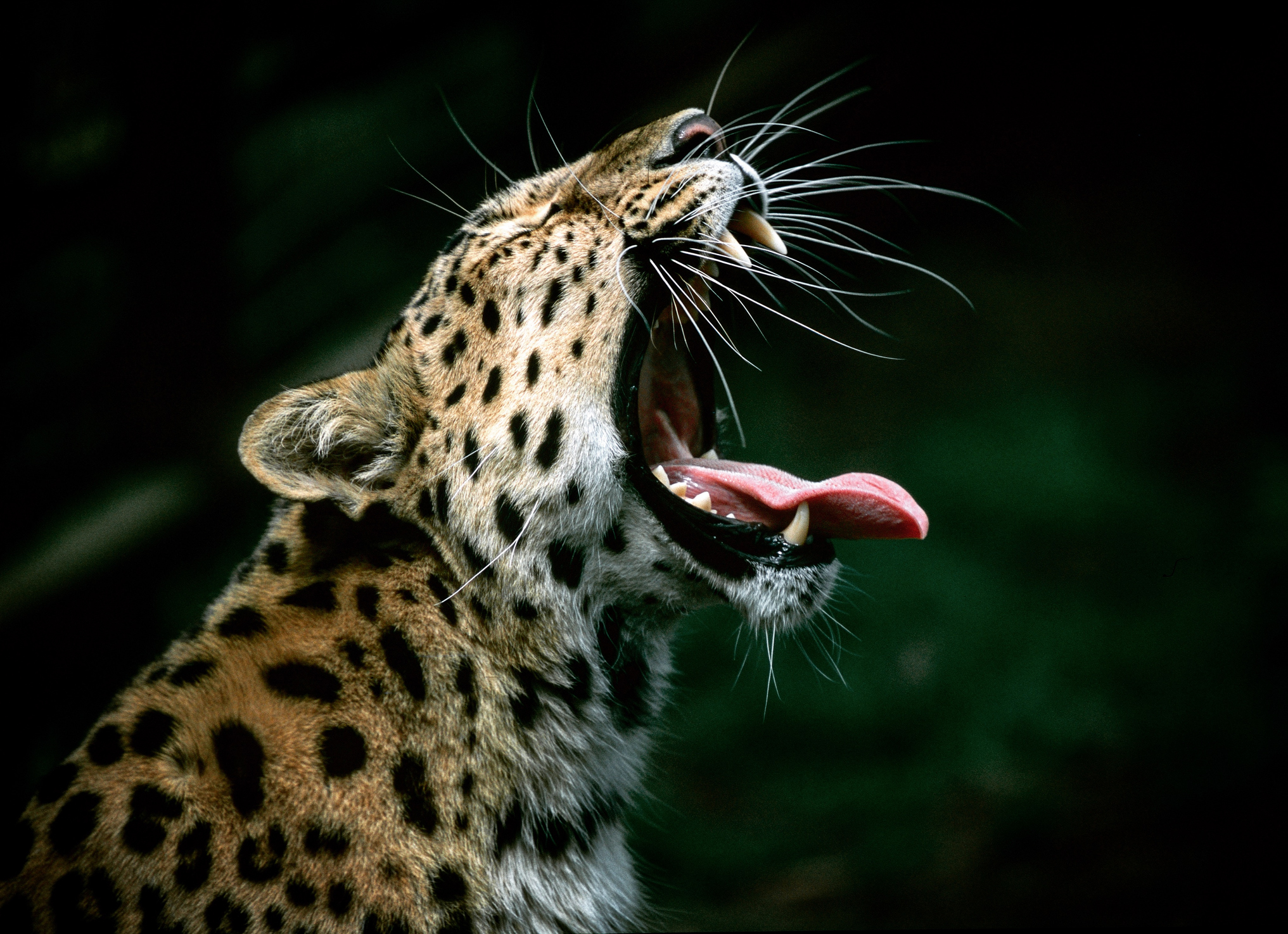Biggest cats in the world
The nine biggest cats prowling our planet today.
Big cats are found all over the planet, and each species is unique, from the elusive snow leopards that stalk wild sheep in the mountains of Afghanistan to the lions that face off against wildebeest in sub-Saharan Africa.
There are many strong contenders for the giant cat crown, but two ferocious felines stand head and shoulders above the rest. From smallest to largest, here are the nine biggest cats living in the wild today.
9. Clouded leopards
Clouded leopards (Neofelis nebulosa) are not leopards (Panthera pardus), as their common name suggests, but a separate species of cat, according to the Smithsonian National Zoo. They are smaller in stature than leopards and other big cats. Clouded leopards can grow up to 3.4 feet (1 meter) long and weigh up to 55 pounds (25 kilograms), according to the San Diego Zoo.
The clouded leopard population extends from Nepal, through Southeast Asia, and into China. However, their population is fragmented and declining due to human activity such as deforestation and illegal hunting, according to the International Union for Conservation of Nature (IUCN). They eat a variety of prey including slow loris (a species of small primates), and small deer.
Related: Clouded leopard declared extinct in Taiwan
8. Lynx
Lynx are wild cats with black tufts of fur on their ears and short stumpy tails. They are found in North America, Europe and Asia. Bobcats (Lynx rufus), the smallest of the four lynx species, are only about twice the size of a domestic house cat but other lynx can be much bigger. The Eurasian lynx (Lynx lynx) is the largest lynx species and can be 4.3 feet (1.3 m) long and weigh up to 79 pounds (36 kg), according to the University of Michigan's Animal Diversity Web (ADW). Lynx eat a variety of prey across their range including rodents, birds and deer.
Related: These two angry, yelling lynx are probably fighting about sex
Get the world’s most fascinating discoveries delivered straight to your inbox.
7. Snow leopards
Snow leopards (Panthera uncia) are elusive cats that live in the mountains of central Asia, including Afghanistan and China, according to the Snow Leopard Trust, a nonprofit conservation organization working to protect snow leopards. Like the clouded leopard, snow leopards have "leopard" in their name but they are not leopards, which are a separate species. Snow leopards are however in the same Panthera genus as leopards and other big cats, such as lions (Panthera leo), because they are closely related. Snow leopards grow up to 4.3 feet (1.3 m) long from head to rump but their tails can add another 3.3 feet (1m) to their total body length. They can weigh up to 120 pounds (54 kg).
Snow leopards prefer to hunt wild sheep, such as Bharal, and other cliff-dwelling species. However, human activity has reduced their habitat and prey, so the big cats will sometimes take domestic livestock, such as goats. This brings the cats into conflict with local herders who depend on their livestock and kill leopards in retaliation, Live Science previously reported.
Related: Rare treat: 3 snow leopards frolic and snuggle on camera
6. Cheetahs
Cheetahs (Acinonyx jubatus) are the fastest land animals on Earth and can run up to 70 mph (112 km/h). They are sizable cats, capable of growing 7.5 feet (2.3 m) long, including their tail. Cheetahs normally weigh between 75 and 125 pounds (34 to 57 kg), according to the Cheetah Conservation Fund.
Cheetahs are mainly found in northern, eastern and southern Africa. They also live in Asia but the species is almost extinct there except for a small population in Iran. They usually eat small to medium-sized prey, including gazelles.
Giant cheetahs once roamed the Earth, and were much larger than the cheetahs alive today. In 2011, scientists discovered fossils at a 1.8 million-year-old site in the Republic of Georgia belonging to an extinct cheetah species called Acinonyx pardinensis, which was estimated to weigh about 220 pounds (110 kg), Live Science previously reported.
Related: Cheetahs are racing toward extinction
5. Pumas
Pumas (Puma concolor) are the most widespread big cat in the Americas and go by many other names including cougar, mountain lion and panther. They can be found from southern Alaska and Canada in the western half of North America, to southern Chile at the bottom of South America, according to Panthera, a cat conservation organization. Their range used to be much greater but they were wiped out of the eastern half of North America by humans, except for a small population that still resides in Florida. Many puma populations are also suspected to be declining in Central and South America due to threats like habitat loss and illegal poaching, although their status in these regions is largely unknown, according to Panthera.
The U.S. Forest Service states that pumas can be more than 8 feet (2.4 m) long, including their tails, and weigh between 130 and 150 pounds (59 and 68 kg). However, some pumas can grow even bigger, and weigh up to 220 pounds (100 kg), according to The National Wildlife Federation, a U.S. nonprofit conservation organization. Pumas hunt small, medium and large prey across their range. In North America, they mostly eat deer, according to the IUCN.
Related: Condors drive cougars to kill more
4. Leopards
Leopards are stealthy and powerful spotted predators ranging through parts of Africa and Asia. They usually grow up to 6.2 feet (1.9 m) long, excluding their tails, which can add another 3.3 feet (1 m). They can also weigh up to 165 pounds (75 kg), according to the San Diego Zoo.
Leopards are sometimes attacked and killed by other large cats that see them as competition for food, including lions in Africa and tigers in Asia. To avoid this, leopards often hunt at different times and places than these other predators, according to ADW. Leopards usually eat medium-sized prey, including small antelope and gazelles.
Related: Leopards might have walked alongside Neanderthals
3. Jaguars
Jaguars (Panthera onca) are the largest big cat in the Americas. They live in North, Central and South America but most reside in the Amazon rainforest, according to the IUCN. Jaguars are occasionally spotted close to the Mexican border in the U.S., but for the most part humans have eliminated the big cats from their historical northern range, which included Arizona and New Mexico.
Jaguars grow to be 5 to 6 feet (1.5 to 1.8 m) long without their tails and up to 9 feet (2.7 m) long with their tails. They can weigh up to almost 350 pounds (158 kg), according to Panthera. Jaguars predate on a variety of animals across their range including deer, monkeys and fish.
Related: Jaguar kills another predatory cat in never-before-seen footage
2. Lions
Lions are the second-largest cat species in the world and are often called the "king of beasts" or "king of the jungle." They are the most social cats and live in groups called prides. Male lions are bigger than females and have luxurious hairy manes. The males can reach 10 feet (3 m) long, including their tails, and weigh up to 550 pounds (250 kg), according to the National Zoo.
Lion populations are decreasing but they can be found in most sub-Saharan African countries, such as Botswana, Tanzania and the Central African Republic. There is also an isolated population of Asiatic lions living in northwest India, according to the IUCN. Lions mainly eat medium to large-sized prey including antelope and zebra.
Related: Small terrapin outsmarts young lion in wild video
1. Tigers
Tigers (Panthera tigris) are the biggest species of cat. These iconic, striped felines also grow up to 10 feet (3 m) long like lions, but tigers are heavier and can weigh up to 660 pounds (300 kg), according to the World Wildlife Fund (WWF). That's three times heavier than the heaviest puma.
Tigers mainly live in the forests of tropical Asia, including India and Indonesia, although they can also be found in colder climates in the far east of Russia and the mountains of Bhutan, according to the IUCN. They sit at the top of the food chain and hunt animals such as deer and wild pigs.
Tigers used to have a far greater range and a much larger population but their numbers have fallen significantly in the last 100 years due to human activity, such as poaching and habitat loss. There are only about 3,900 tigers left in the wild today, according to Panthera.
Related: There are more 'pet' tigers than there are in the wild. How did that happen?

Patrick Pester is the trending news writer at Live Science. His work has appeared on other science websites, such as BBC Science Focus and Scientific American. Patrick retrained as a journalist after spending his early career working in zoos and wildlife conservation. He was awarded the Master's Excellence Scholarship to study at Cardiff University where he completed a master's degree in international journalism. He also has a second master's degree in biodiversity, evolution and conservation in action from Middlesex University London. When he isn't writing news, Patrick investigates the sale of human remains.












